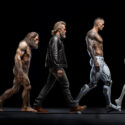How would it feel to control objects with your mind? Or hear colors? Or maybe even live forever? Well, if you want to find out, all you have to do is become a cyborg. How would being part machine affect us?
Would it cause a greater divide between the rich and the poor? And is this the next step in human evolution?
Wait, to call this a WHAT IF is a bit misleading. It’s more of a when if because cyborgs are already among us. And according to the world’s first cyborg Neil Harbisson, they’re not going anywhere.
And that’s not the only change we can expect with this technology. Artificial intelligence is becoming more advanced by the day. Within the next 50 years, AI will be replacing most of our jobs. They’ll simply be better at them than we are.
Elon Musk thinks that for humans to avoid being reduced to the usefulness of a housecat, we’ll need to augment ourselves to compete with robots. Although, according to our resident cyborg Neil, instead of fighting the inevitable robot takeover, we should embrace it. But before we get into that, let’s start making you a cyborg.
The first decision you’ll need to make is what kind of changes you want to make to your body. Do you want cybernetic eyes that allow you to see in black and white or sepia? What about a chip in your hand that starts your car for you? Or, if you want to get crazy, you could change your entire bone structure to be carbon fiber. The possibilities are practically endless! When Neil Harbisson decided to become a cyborg, he wanted to view the world in a way it had never been seen before.
Human augmentation will allow us to be better at almost anything that we do now. Both physically and mentally. Imagine having mechanical arms. You’d be shooting three-pointers more consistently than Steph Curry. You’d have a harder punch than Mike Tyson and a faster serve than Serena Williams. That’s because your arms will be programmed to be more consistent and just overall better than human components could ever be. With two bionic arms, you’d be one of the greatest athletes ever to live.
Although, if everyone had these arms, sports might be more boring, but don’t forget these arms can be used for several things. Most importantly, it may help us outwork robots in factories and other lines of work. Many of us are afraid of the inevitable takeover of artificial intelligence, but maybe we’re just watching too many science fiction movies.
If you really want to see how this whole “rise of the machines” thing will play out, maybe you can modify yourself to become immortal. If you have a failing body part, you could simply replace it with a mechanical one. And after it fails, you could replace it again, and again, extending your life far past its natural expiry date.
But at this point, you may barely be human. The only organic part of you that might remain could be your mind. Is it too late to go back? Unfortunately, it is. Once you become a cyborg, there’s no turning back, even if you don’t get any invasive surgery.
Let’s say you get an ear enhancement that allows you to hear as well as a bat. If it somehow got damaged or fell out of your ear, you wouldn’t be able to hear at all. Why? Because your brain would have adapted to hearing with your enhancement. Once it’s gone, you wouldn’t know how to hear without it.
Oh, and don’t forget about the chance of your body parts being hacked, and then losing control of them. Not only that, but who will be able to get these enhancements? Some people fear that they would only go to the rich, causing a further class divide in our society. But what if it’s the complete opposite?
Instead of focusing on the potential negative consequences of becoming cyborgs, maybe we should start looking on the bright side. As Neil Harbisson explains, cybernetic modifications could help us save the planet.
If we really want to reduce our impacts on the planet, why don’t we leave our bodies behind and upload our brains to the cloud?
Sources
- “Elon Musk Says Humans Must Become Cyborgs To Stay Relevant. Is He Right?”. 2017. The Guardian.
- “Humanity’S Next Stage Of Evolution Could Be The Cyborg“.Gohd, Chelsea. 2017. Futurism.
- “Beyond Human: How I Became A Cyborg“. Swain, Frank. 2020. Bbc.Com. V
- “To Integrate And To Empower: Robots For Rehabilitation And Assistance”. Yang, Guang-Zhong, Robert Riener, and Paolo Dario. 2017.
- “Cyborgs: The Truth About Human Augmentation“. Swain, Frank. 2020. Bbc.Com.
- “The Future Is Here: Six Of Today’s Most Advanced, Real-Life Cyborgs“. Tangermann, Victor. 2017. Futurism.



























